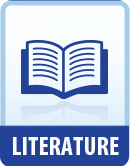|
This section contains 7,214 words (approx. 25 pages at 300 words per page) |

|
SOURCE: "The Poet of Transition," in Tradition and Experiment in the Poetry of James Thomson, Institut für Anglistik und Amerikanistik, 1981, pp. 196-214.
In the essay that follows, Agrawal contends that Thomson anticipated Romantic poetry not in his rejection of or relationship to the Neoclassicism of his own age, but rather by reviving the romanticism of Elizabethan poetry.
Thomson bridges two distinct epochs in literary history. He played the epilogue to the school of classicism and prologue to the school of Romanticism. While retaining his allegiance to the school of Pope, he heralded the dawn of romanticism in more than one way. The general tone and style of all his work link him to the neo-classical school of poetry, while his subject and forms of poetic expression point to the poetry of the new age.1 But Thomson is not quite a transitional poet in the conventional sense of...
|
This section contains 7,214 words (approx. 25 pages at 300 words per page) |

|


